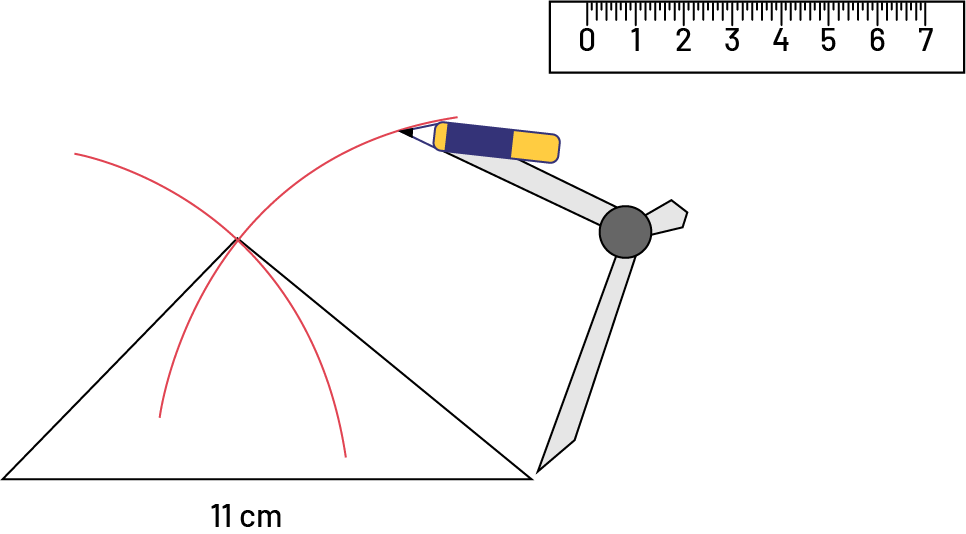E1.1 Identify geometric properties of triangles, and construct different types of triangles when given side or angle measurements.
Skill: Identifying the Geometric Properties of Triangles
Geometric properties are specific attributes that define a class of two-dimensional shapes or three-dimensional objects. Some geometric properties of triangles are:
- All triangles have three sides and three angles.
- The combined length of any two sides of a triangle is always greater than the length of the third.
- The sum of the measurements of the interior angles of a triangle always equals 180° (for example, 70° + 60° + 50° = 180°).
- The sum of the measurements of the exterior angles of a triangle always equals 360° (for example, 110° + 120° + 130° = 360°).
- The sum of the measurement of an interior angle and the corresponding exterior angle is always 180° (for example 130° + 50° = 180°).
Triangles can be classified according to the length of their sides or the size of their angles.
Classification of Triangles According to the Length of the Sides
Equilateral Triangle
Three equal sides

Isosceles Triangle
Two equal sides

Scalene Triangle
No equal sides

Classification of Triangles According to the Measure of the Angles
Acute Triangle
All angles are less than 90°

Triangle Rectangle
One angle is 90°

Obtuse Triangle
An angle greater than 90°

Source: The Ontario Curriculum. Mathematics, Grades 1-8 Ontario Ministry of Education, 2020.
Skill: Drawing a Triangle According to Its Known and Unknown Characteristics
There are different techniques for constructing triangles depending on what is known and unknown.
When all side lengths of a triangle are known but the angles are unknown, a ruler and compass can be used to construct the triangle. To do so, one could draw the length of one of the sides, then set the compass for the length of another side. The compass can then be put at one of the ends of the line and an arc drawn. Now the compass should be set to the length of the third side and set on the other end of the line to draw another arc. Where the two arcs intersect is the third vertex of the triangle (see the diagram below). The sides can be completed by drawing a line from the ends of the original line to the point of intersection.

When one side length and two of the angles of a triangle are known, a protractor and a ruler can be used to construct the triangle. The unknown vertex is the point where the arms of the angles intersect:

Triangles can also be constructed using dynamic geometry applications in many ways, including by transforming points and by constructing circles.
Source: The Ontario Curriculum. Mathematics, Grades 1-8 Ontario Ministry of Education, 2020.
Knowledge: Geometric Property
A property is a particular characteristic that is used to define a geometric shape or object or a family of geometric shapes or objects. Be careful not to confuse properties and attributes. Attributes describe the physical appearance of a shape or object, such as its size, color and texture.
Example
The number of sides, the measurements of angles, and the number of diagonals are examples of properties.
Source: translated from Guide d’enseignement efficace des mathématiques de la 4e à la 6e année, Géométrie et sens de l'espace, Document d'appui, Fascicule 1, p. 5.
